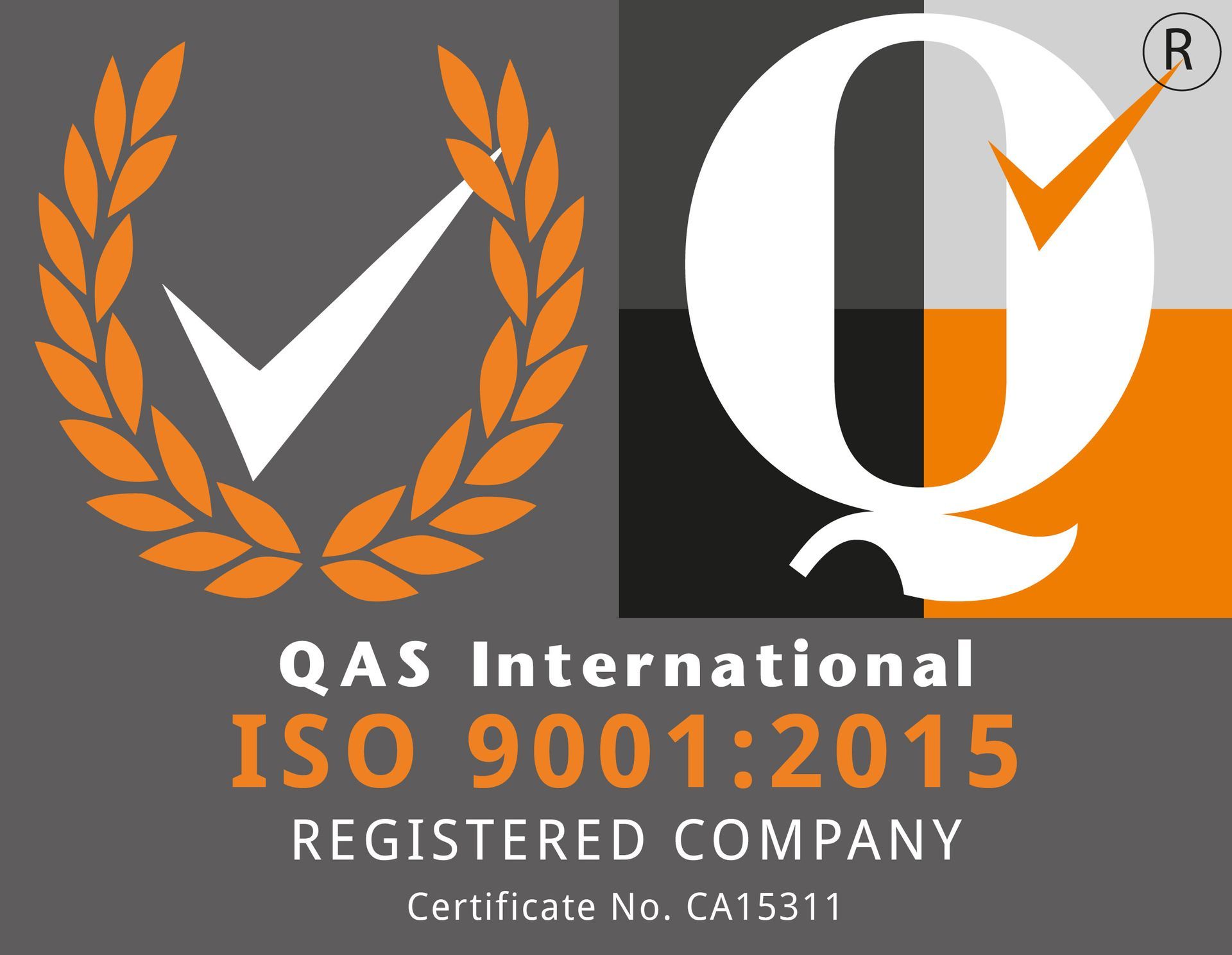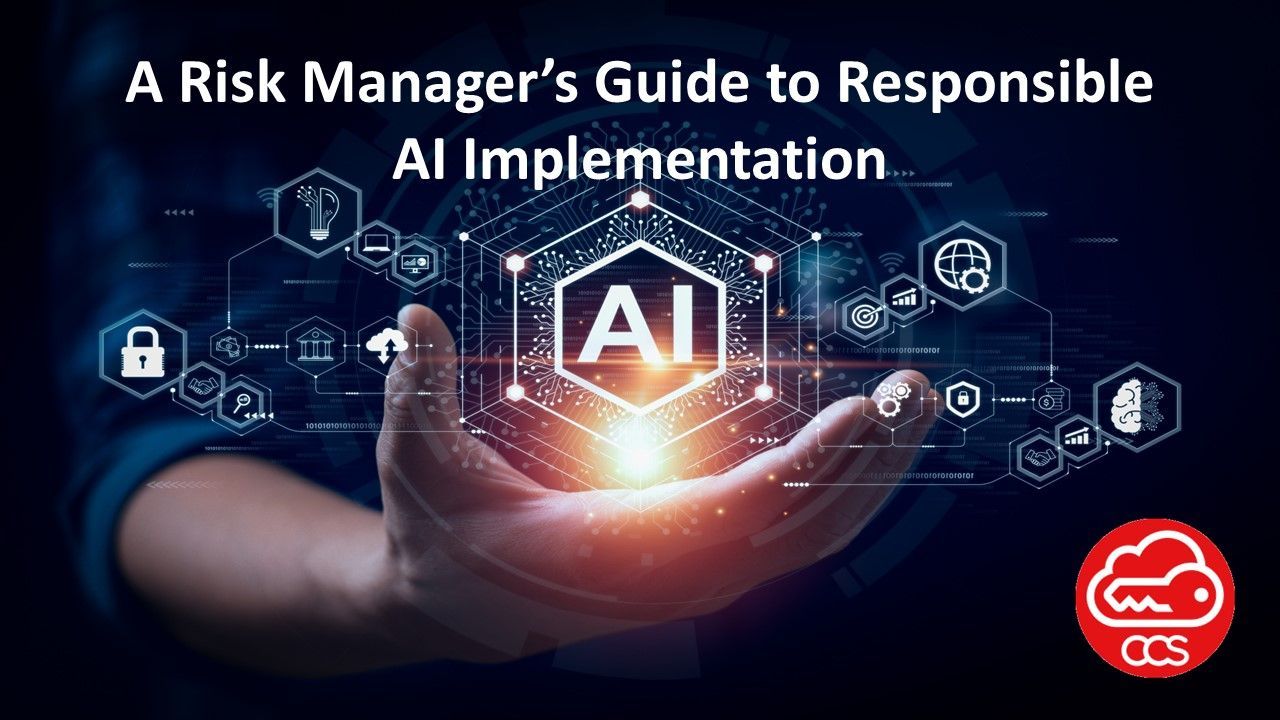A Risk Manager’s Guide to Responsible AI Implementation
As a Risk Manager, the integration of Artificial Intelligence (AI) into your organisation’s operations presents both an opportunity and a challenge. While AI can drive innovation and efficiency, it also introduces new risks that must be carefully managed.
This guide offers a comprehensive approach to AI implementation, tailored to the needs of Risk Managers. It outlines the key considerations you should take into account, from ensuring data readiness and compliance with regulations to managing ethical risks and safeguarding your organisation’s reputation.
Additionally, it highlights the importance of adopting the ISO 42001 standard, a framework that can help you manage AI systems responsibly and effectively, ensuring that they align with both business objectives and ethical standards.
This guide is designed to help you navigate the complexities of AI integration while protecting your organisation from potential pitfalls.
Key Considerations for AI Implementation from a Risk Management Perspective
Defining Clear Objectives and Use Cases
- Clarify Goals:
- As a Risk Manager, it’s crucial to ensure that the objectives of AI implementation are clearly defined and aligned with the organisation’s risk appetite. Whether the goal is to enhance operational efficiency, improve decision-making, or innovate new products, understanding the specific risks associated with each objective is essential.
- Identify and Prioritise
- Use Cases: Evaluate potential AI applications based on their risk profiles. Start with low-risk, high-reward projects that can demonstrate value while minimising exposure to significant risks.
2. Ensuring Data Readiness
- Data Quality Assurance:
- AI systems rely on accurate and relevant data. Implement robust data governance practices to ensure that the data feeding into AI models is of high quality and free from biases that could lead to flawed outcomes.
- Assessing Data Volume and Security:
- Ensure your organisation has access to sufficient data and that this data is stored and processed securely. Data breaches or inaccuracies could lead to significant reputational and financial risks.
- Integration with Existing Systems:
- Evaluate how AI systems will interact with your current data infrastructure. Poor integration can lead to data silos, inconsistencies, and increased risk.
3. Building a Robust Technology Infrastructure
- Scalability and Resilience:
- Your IT infrastructure must be capable of supporting AI workloads, including increased computational demands. Additionally, ensure that systems are resilient and can recover quickly from failures, minimising operational risks.
- Secure Integration:
- Safeguard the integration of AI systems with your existing technology stack to prevent vulnerabilities that could be exploited by malicious actors.
4. Developing Talent and Expertise
- Risk-Aware Skill Development:
- AI implementation requires specialised knowledge in data science, AI engineering, and risk management. Ensure that your team is trained not only in AI but also in understanding the associated risks.
- Cross-Functional Collaboration:
- Facilitate collaboration between AI experts, risk managers, and business leaders to align AI initiatives with the organisation’s risk management strategies.
5. Addressing Ethics and Compliance
- Mitigating Bias and Ensuring Fairness:
- AI systems can perpetuate biases inherent in the data they are trained on. Implement strategies to detect and mitigate bias, ensuring that AI decisions are fair and do not expose the organisation to legal or reputational risks.
- Maintaining Transparency:
- Ensure that AI systems operate transparently, especially in industries where regulatory scrutiny is high. Transparent AI operations help mitigate the risk of non-compliance with regulations such as GDPR.
- Regulatory Compliance:
- Stay up-to-date with evolving AI regulations and ensure that your AI systems comply with all relevant laws. Non-compliance can result in significant penalties and damage to the organisation’s reputation.
6. Managing Organisational Change
- Navigating Cultural Shifts:
- AI implementation may require significant cultural changes within the organisation. Be mindful of the risks associated with employee resistance or fear of job displacement, and manage these changes carefully to maintain morale and productivity.
- Comprehensive Training and Communication:
- Provide targeted training to help employees understand the role of AI and how it will impact their work. Effective communication is key to minimising resistance and ensuring a smooth transition.
7. Evaluating Costs and ROI
- Cost-Benefit Analysis:
- AI projects often involve substantial investments. As a Risk Manager, it’s important to assess whether these costs are justified by the expected benefits and to identify any hidden risks that could impact ROI.
- Monitoring Key Performance Indicators (KPIs):
- Define and track KPIs to measure the success of AI initiatives over time. Regularly review these metrics to identify any emerging risks or areas for improvement.
8. Securing AI Systems
- Data Security:
- Implement robust cybersecurity measures to protect the data used in AI models from breaches and unauthorised access, which could result in significant financial and reputational risks.
- Safeguarding AI Integrity:
- Ensure that AI systems themselves are secure from manipulation or hacking, particularly in critical applications where the consequences of tampering could be severe.
9. Choosing the Right Vendors and Tools
- Risk-Based Tool Selection:
- Select AI tools and platforms that align with your organisation’s risk management strategy. Evaluate their scalability, security features, and compatibility with existing systems.
- Vendor Due Diligence:
- Conduct thorough due diligence when partnering with AI vendors. Ensure they have a strong track record of managing risks and can provide the support necessary for successful implementation.
10. Conducting Pilot Tests
- Risk-Aware Piloting:
- Start with pilot projects to assess the potential risks of AI in your specific business context. Use these pilots to identify and address any challenges before full-scale implementation.
- Continuous Improvement:
- Use feedback from pilot tests to refine your AI systems, ensuring that they evolve to meet the organisation’s needs while managing risks effectively.
11. Developing a Long-Term AI Strategy
- Sustainable AI Practices:
- Develop a long-term strategy for AI that includes continuous learning, adaptation, and risk management. Ensure that your AI systems are sustainable and aligned with the organisation’s future goals.
- Future-Proofing Against Emerging Risks:
- Stay informed about AI trends and emerging risks. Proactively update your risk management strategies to address new challenges as AI technology evolves.
12. Navigating Legal and Intellectual Property (IP) Risks
- Managing IP Risks:
- Understand the ownership and usage rights of AI models, data, and insights, particularly when working with third-party vendors. Mismanagement of IP can lead to legal disputes and financial losses.
- Clear Contractual Agreements:
- Ensure that contracts with AI vendors clearly define data ownership, usage rights, and IP responsibilities to avoid potential legal risks.
The Role of ISO 42001 in AI Risk Management
As you navigate the complexities of AI implementation, adopting the ISO 42001 standard can provide a structured and comprehensive approach to managing AI risks responsibly and effectively.
What is ISO 42001?
ISO 42001 is an international standard that establishes a framework for AI management systems, focusing on responsible and ethical AI development, implementation, and maintenance. The standard emphasises risk management, transparency, and continuous improvement, ensuring that AI systems are developed and operated in a manner that aligns with both business goals and ethical standards.
How ISO 42001 Can Benefit Your Organisation:
- Commitment to Responsible AI:
- By adopting ISO 42001, your organisation demonstrates a commitment to responsible AI practices, enhancing trust with customers, investors, and regulators.
- Improved AI System Quality and Security:
- The standard helps ensure that AI systems meet high standards for quality, security, traceability, and transparency, which are essential for managing risks and building reliability.
- Enhanced Risk Management:
- ISO 42001 provides a robust framework for identifying and mitigating risks associated with AI systems, leading to more efficient and secure AI deployment.
- Regulatory Compliance Assurance:
- The standard aligns with major regulatory frameworks, such as the EU AI Act, helping your organisation ensure compliance with relevant laws and avoid potential legal issues.
- Ethical AI Use:
- ISO 42001 provides guidelines for the ethical use of AI, particularly in sensitive areas like healthcare, finance, and law enforcement, helping you navigate complex ethical challenges.
- Balancing Governance and Innovation:
- While ISO 42001 offers a structured approach to AI management, it also allows for the flexibility needed to innovate and remain competitive in a rapidly evolving landscape.
- Building Trustworthy AI Systems:
- By adopting ISO 42001, your organisation can establish a robust AI management system that stakeholders can trust, facilitating the wider adoption and acceptance of AI technologies.
For Risk Managers, the implementation of AI systems is a complex but rewarding endeavour that requires meticulous planning, ethical considerations, and a strategic approach to risk management. By considering the key factors outlined in this guide, you can better position your organisation to harness the full potential of AI while mitigating the associated risks.
ISO 42001 serves as an invaluable tool in this process, providing a comprehensive framework for responsible and effective AI risk management. By adopting this standard, you can ensure that your AI systems are not only innovative but also secure, transparent, and aligned with both ethical and regulatory standards. This will help build trust with stakeholders and provide a competitive edge in the rapidly evolving AI landscape.
As AI continues to shape the future of business, ISO 42001 offers a roadmap for navigating this transformative technology responsibly and effectively.






